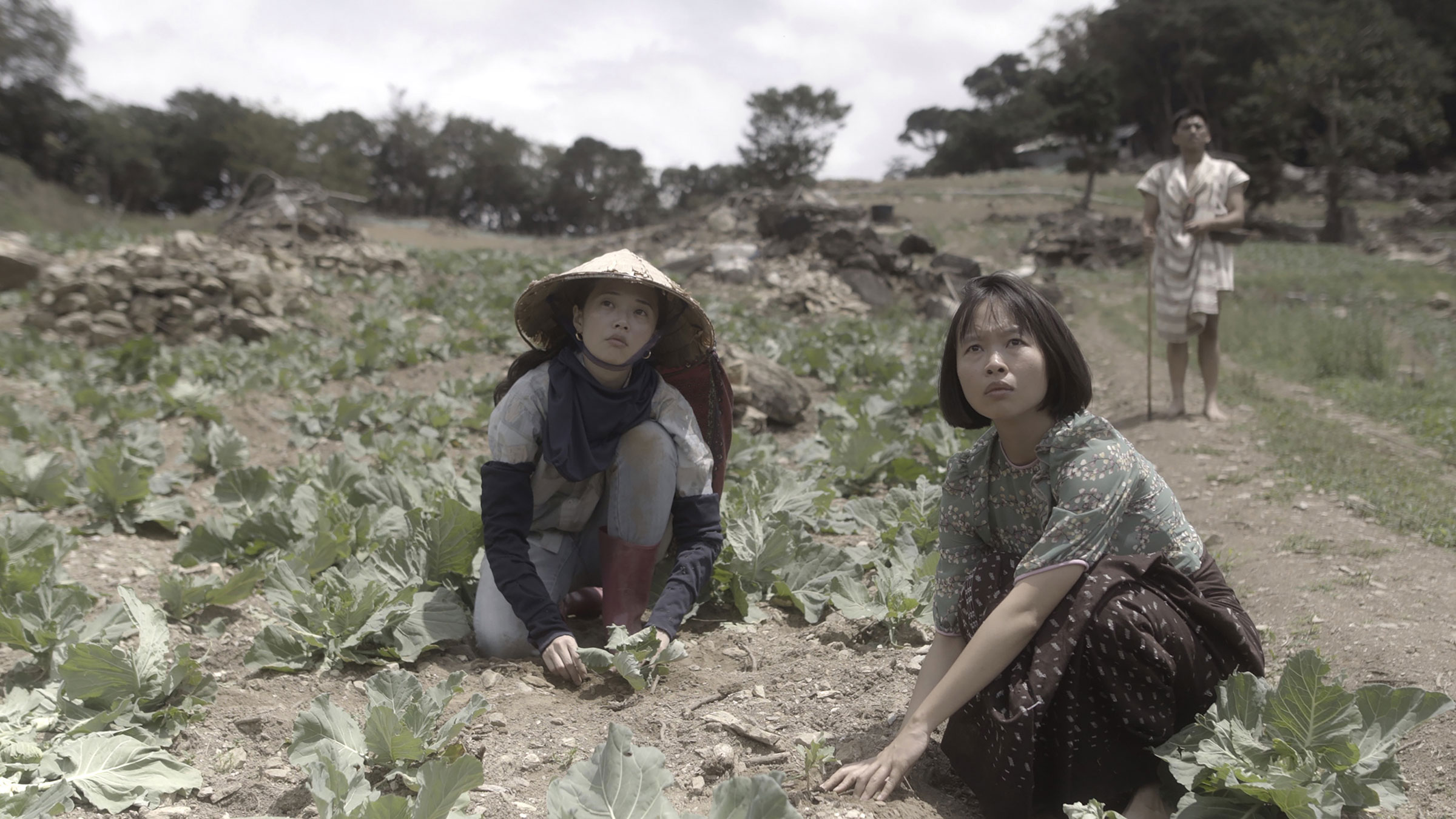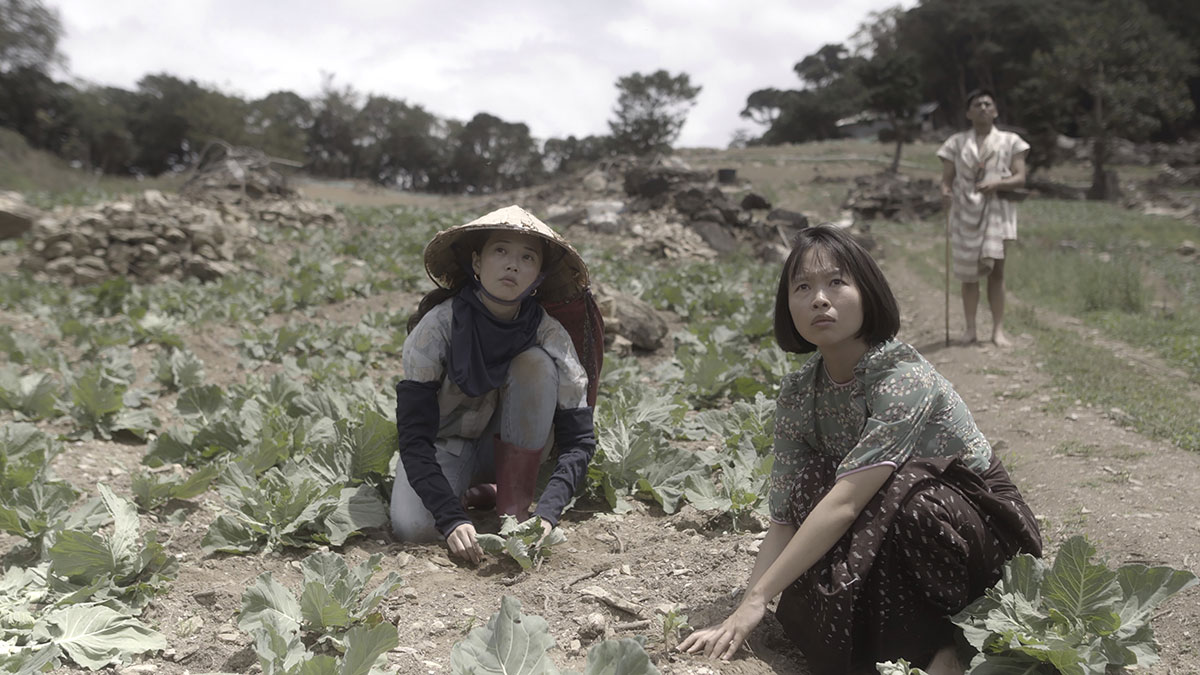KUO Chin-Yun

Cartographer
- 2020, single-channel video, 28 min 32 sec.
- Courtesy of the artist.
Curatorial Perspective
Kuo Chin-Yun’s practice engages in multidimensional landscape of history. Through personal hiking, walking, and laboring, as well as field survey, interview, and gathering and collating literature, she addresses diasporic experiences caused by early modern colonial rule, in particular, in the case of those left behind and out of the narratives of grand histories in life. Her work reveals the perseverance of survival in ecological space altered by modern technology, showing how different logic of life has survived in a subtle manner. The artist therefore includes and represents these spectral sentient beings wandering in the peripheries through her works. Blank Zone, by Cartographer Yu Chung (1878), Noro Yasushi (1910), US Army (2020) reverses the blankness produced by early modern cartographic technologies: Since photography was invented in the 1830s, technics of national governance have utilized aerial photography, combined with infrastructure traversing mountainous regions, to break through geographic barriers. In between the folds on maps exist ruins created by extractive colonialism scattered on the surface of the Earth. This work reminds us of the “mushroom at the end of the world” depicted by anthropologist Anna Lowenhaupt Tsing—on that blank map, the artist and the anthropologist guide us to question about “the possibility of life in capitalist ruins.” The 2022 version of The Creolization of Body is specially produced for the “Taiwan Art Biennial.” In this work, the artist shifts her interest in diaspora, migration, and border experience to her own self: The experience of living in Europe for years has opened her eyes to the reality that many cultural practices, such as tea ceremony that she used to take for granted, are embedded with codes about body, ecology, politics, and history, which, to the artist, is part of the process of the creolization of the body.
Creation Description
Blank Zone, by Cartographer Yu Chung (1878), Noro Yasushi (1910), US Army (2020)
After modern surveying techniques has applied to Taiwan, cartographers no longer draw by hand hard-to-reach and hard-to-govern mountainous areas. Places where governing power does not reach can only be left blank. On six-leaf screens are maps spanning three regimes based on data from Taiwan’s map archives. With 44 digitally distorted Google satellite photos as the base, the Map of Taiwan Island, the first to record how to reach the periphery of Taiwan, based on the concept of latitude and longitude, is superimposed. Satellite image data are overlayed onto mountainous areas in the center of the island, but not completely, leaving a Blank space Zone. This space began to be addressed in 1916, when Taiwan was a colony of Japan, under the leadership of Japanese cartographer Noro Yasushi. In the current era, in which aerial and satellite photography is used to view places that are difficult for humans to reach, will people’s desire to encode “Blank Zones” disappear with the advent of panoramic surveying?
Cartographer
The publishing of maps has influenced the way that people understand the world. Official maps have frequently accompanied the administrative objectives of rulers. During this island’s long colonization history, the difficult-to-survey mountainous areas, which were not described until late in the history of cartography, have been feared by some regimes as they hid rebels. Folded and wrinkled, they are the common “homeland” of people who have encountered diaspora due to the arrangements of regimes. After withdrawing from the tasks of extraction of resources and expansion of governance. It is a Zone where used to inhabited by wild animals, Negrito people, the Truku tribe in search of hunting grounds, Japanese military explorers, soldiers evacuated from Myanmar who settled there colonies in the high mountains to reclaim, and escaped migrant workers who having been displaced at current moment roaming here. Their ghost-like nomadism and migration have led to the drawing of a map of wandering within an area of Blank Zone.
The Creolization of Body–2022 version
The Creolization series of works explores the fluid boundaries between ethnic groups and cultures. It is originated from the “micro mining” work of Kuo Chin-Yun in 2016, as she looked at her own migration experience. Collecting the soil that is available locally, she produces sentimental objects for use in her cultural rituals. Based on the ritualization of these objects, the practice of cultural identity of settlers in their new homes is explored. At a time when there is accelerated migration around the world, The Creolization of Body offer an invitation to bring audiences into the performance of a daily ritual practice. In these performances, the heterogeneity of the imagined ancestry, as well as the commodification of culture, colonial industrialization, and the entry of objects and bodies into global circuits are mixed into the process by which it become a ritual of identity.

